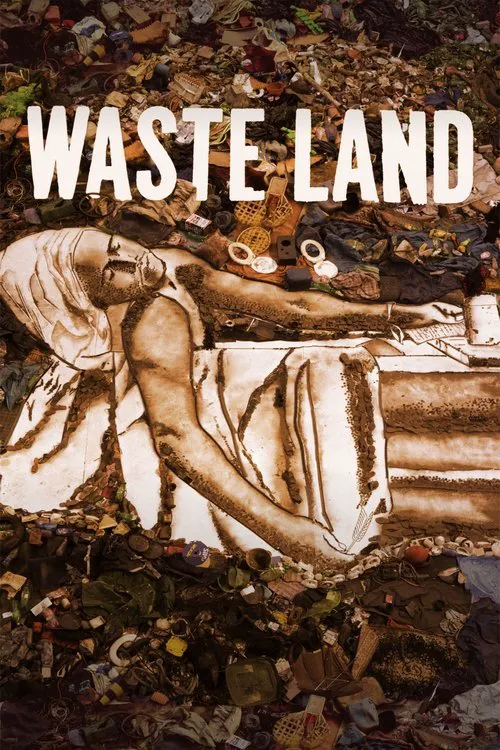Waste Land

Plot
In the vibrant city of Rio de Janeiro, nestled on the outskirts lies the world's largest landfill, Jardim Gramacho. This vast expanse of discarded waste stretches as far as the eye can see, a stark reminder of the city's unsustainable practices and the lives it supports. At this unlikely hub of activity live the catadores, or "pickers," a community of individuals and families who make their living by sorting through the garbage, scavenging for valuable recyclables. They are a resilient and resourceful people, accustomed to the grueling toils of their profession. Among the trash and detritus, a remarkable artist is at work. Vik Muniz, a celebrated contemporary artist known for his thought-provoking installations and sculptures, has come to Jardim Gramacho seeking inspiration and collaboration. He is drawn to the catadores, with their unique blend of grit, determination, and poetry. Muniz has long been fascinated by the transformative power of art, and here, amidst the squalor and decay, he sees the potential for creation. With an infectious enthusiasm, Muniz sets out to bring his artistic vision to life. He begins by meeting with the catadores, many of whom are struggling to make ends meet and maintain a sense of dignity in the face of overwhelming circumstances. As he gets to know them, Muniz is struck by their intelligence, their humor, and their capacity for love. There's Jose, a charismatic and resourceful leader among the catadores; Maria Piu, a fiercely independent woman with a deep connection to her community; and Joao, a quiet, introspective soul with a talent for poetry. As Muniz works with the catadores, he realizes that he is not just creating art – he is creating a sense of community, of connection, and of purpose. He invites the catadores to collaborate with him on a series of installations, using materials they have gathered from the landfill to create sculptures, mosaics, and other works of art. The catadores are transformed by this experience, seeing themselves not just as garbage pickers, but as artists, as creators of something new and beautiful. One of the primary artistic projects Muniz undertakes is to recreate a landscape of the Jardim Gramacho using only trash from the landfill. Using paint made from the recycled materials found in the dump, he works alongside the catadores to create an enormous mosaic of the landscape. This striking representation of the garbage and beauty intertwined will become the centerpiece of the film Waste Land. As this and other artistic projects unfold, we witness the transformative power of creativity at work, as the catadores and Muniz come together to challenge the status quo and defy the expectations of what is possible in this seemingly impossible place. Throughout the film, Muniz shares his passion for art, revealing how it has shaped his own life and informed his worldview. He speaks candidly about his journey, from his humble beginnings as a poor child in Brazil to his emergence as an internationally renowned artist. We also witness Muniz as artist, a creator driven by a sense of wonder and a need to express the beauty he sees in the world. Through the lens of his camera, we see the beauty of the catadores, as well as the beauty that emerges from their collaboration with Muniz. Together, they defy the boundaries of what we normally define as art and challenge the conventional notion of what it means to be creative. The collaboration between Muniz and the catadores is multifaceted. While creating art, they also engage in profound conversations, sharing their dreams, desires, and concerns. We hear their stories of struggle and resilience, their humor and their compassion. As we listen to these powerful, personal narratives, we come to understand the complexity and richness of their lives. The boundaries of their worlds become blurred, and we begin to see the beauty that exists within the squalor and the poverty. In addition to exploring the transformative power of art, Waste Land highlights the catadores' struggles and triumphs as they navigate the difficult lives they lead. The film shines a light on the lives lived on the margins, in the shadows of our modern world. They are individuals, not statistics or figures. Their struggles, their triumphs, and their stories make them all the more relatable, all the more human. The film Waste Land, through its uplifting portrayal of art's transformative power and the beauty of the human spirit, offers us a unique view of an often-ignored world and the resilience and creativity of those who call it home. A powerful testament to the resilience and beauty of the human spirit, this documentary film challenges us to redefine what we consider "art" and to see the beauty within the squalor, to see it in those whose lives may be touched by it, to understand their world, and to find our own place within it.
Reviews
Recommendations




